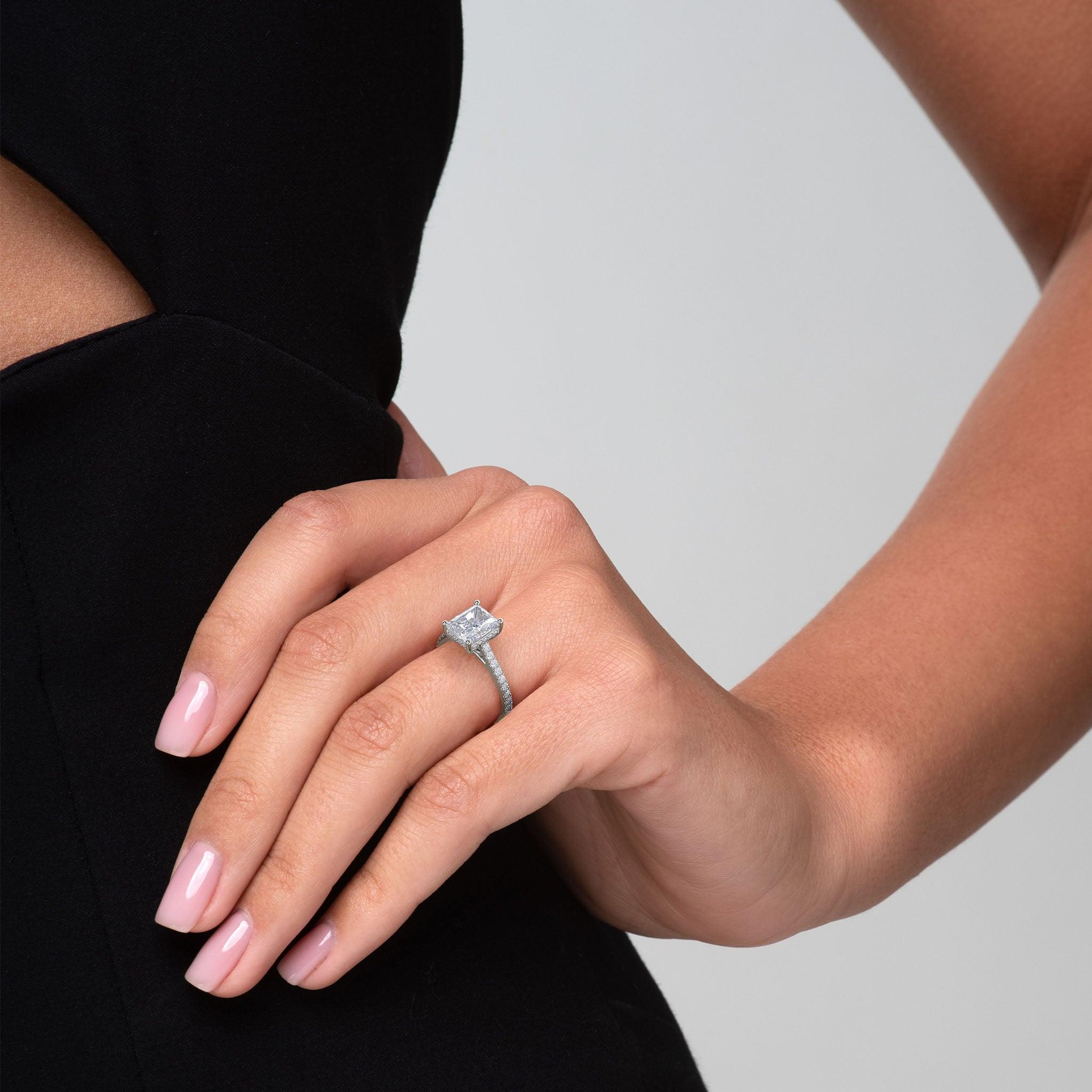A diamond is made up of many parts, not least, the girdle. The outer edge of the diamond is known as the girdle and is where the top of the diamond, commonly known as the crown meets the bottom, or the pavilion.

The girdle may present a number of different appearances depending on personal taste. For example, it may be bruted – a continuous surface – unpolished, that follows the circumference. The girdle may also be faceted – various sides that have been highly polished; or polished – a girdle that has been bruted and polished to a smooth surface. The value and appearance of the diamond is not affected in any way by the choice of a bruted, faceted or polished girdle.
The girdle of a diamond is illustrated by the measurement of its width. There is often variation in the measurement because the girdle may be thinner or thicker at different points of the diamond. A thin to medium girdle demonstrates a measurement in a range from the thinnest point to medium at the widest. A Monroe Yorke diamond will clearly present the width of the girdle. The girdle measurement for each unique stone will be determined by GIA. The scale below provides their method of measurement:
| Extremely Thin |  |
| Very Thin |  |
| Thin |  |
| Slightly Thin |  |
| Medium |  |
| Slightly Thick |  |
| Thick |  |
| Very Thick |  |
| Extremely Thick |  |
The girdle of the stone will have great influence. Below are three ways the measurement of the girdle will affect the diamond.
- The position of the facets will be affected by the thickness of the girdle. The cut will also be influenced by this measurement. The girdle width will be taken into consideration when the diamond’s Cut grade is established, so a grade determining a well cut diamond will produce enhanced scintillation, brilliance and fire, and will not depend on whether the girdle has been graded as ideal i.e. thin to slightly thick width range.
- A girdle with a measurement at the thicker end of the scale will produce a diamond with a greater weight, so will therefore have a greater price. A diamond with a thick girdle will not appear larger when viewed from the top (the table). A thicker girdle will enhance depth but not width, even with the higher carat weight. There will be an effect on the price of the carat weight, but this will be negligible.
- A diamond with a measurement indicating an extremely thin girdle will mean the diamond will be vulnerable to chipping and not necessarily ideal for setting within a ring. These diamonds will be better protected within the setting of a pendant or in earrings. For princess diamonds, extremely thin and very thin girdles mean that this cut of stone is probably best avoided for settings that leave it vulnerable to chipping. Settings that protect the corners of a princess stone with this girdle measurement will prevent damage.


